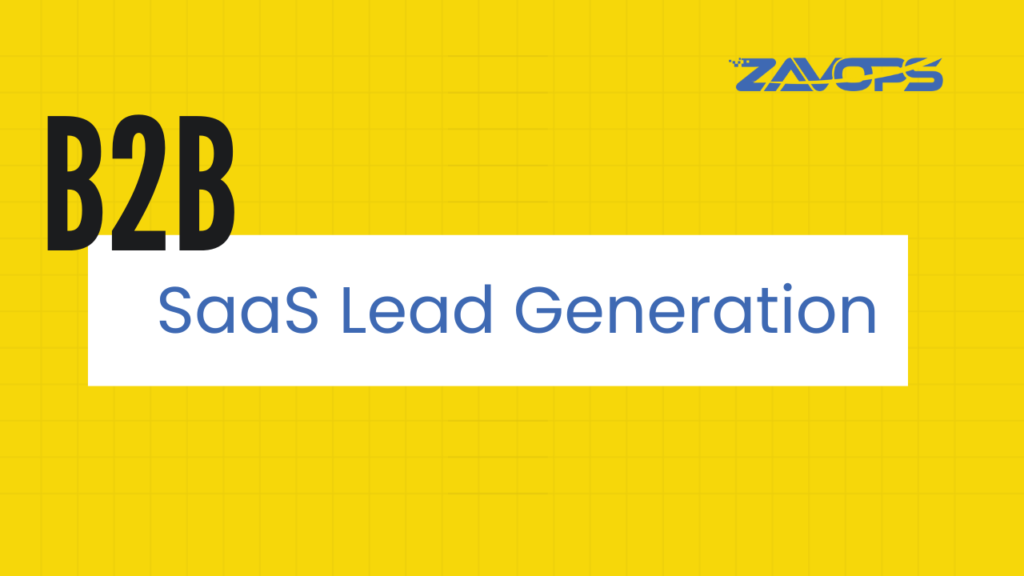
SaaS B2B Lead Generation Strategies: 4 Proven Performance Marketing Strategies For SaaS Lead Generation
The key to real SaaS business growth? Predictability.
Accurate revenue prediction empowers you to make informed decisions on spending, staffing, and product development. But for that, you need a predictable sales pipeline.
The foundation? A successful SaaS B2B lead generation strategy
Finding and nurturing high-value leads requires a strategic approach.
In this blog, we’ll explore some of the most effective SaaS lead generation strategies, drawing on our experience as a leading Australian performance marketing agency for SaaS companies.
What is lead generation in SaaS?
In the dynamic realm of SaaS, crafting effective lead generation strategies is pivotal for sustained success. Marketing strategies for SaaS companies encompass a multifaceted approach, combining digital channels, content marketing, and user engagement.
It’s the art of positioning your software solution in a crowded market, ensuring your target audience not only notices but actively engages with what you have to offer.
Your SaaS lead generation strategies needs to cover both inbound and outbound marketing efforts to ensure continuous contribution to your opportunity pipeline.
Inbound Marketing – SaaS companies often leverage inbound marketing, creating valuable content to attract and educate potential customers.
Outbound Marketing – Targeted and personalized email campaigns, cold calling, and other cold or warm outreaches constitute outbound.
Striking a balance between these approaches is key, ensuring a comprehensive strategy that addresses different stages of the buyer’s journey and maximises reach.
Current Challenges in Lead Generation For SaaS Companies
Amid the industry’s triumphs, SaaS companies grapple with a set of distinct challenges. The competitive landscape is fierce, with new entrants vying for market share and established players constantly evolving to meet evolving customer expectations.
Customer acquisition costs pose a persistent challenge, prompting SaaS businesses to refine their lead generation strategies for sustained success.
Navigating these hurdles demands a nuanced approach that goes beyond traditional marketing tactics, requiring a comprehensive understanding of the unique dynamics within the SaaS ecosystem.
In the subsequent sections, we delve into proven lead generation strategies tailored to propel SaaS companies towards sustained growth and success.
How do create a successful SaaS lead generation strategy?
A successful SaaS lead generation strategy is a well-oiled machine with several key components working together. Here are some of the essential parts of successful lead generation strategy for SaaS businesses:
1. Buyer Persona Development:
Who are you targeting? Before diving into tactics, you need to understand your ideal customer profile. This includes demographics, pain points, goals, and tech-savviness.
2. Funnel Design:
How will you capture leads? Visualize the journey potential customers take from awareness to conversion. This funnel will involve stages like attracting visitors, capturing leads, nurturing them, and converting them into paying customers.
3. Multi-Channel Promotion:
Reach your audience where they are. Utilize various channels like social media marketing, search engine optimization (SEO), paid advertising, or influencer marketing to reach your ideal customers.
4. Analytics and Optimization:
Track, measure, and improve. Continuously monitor your lead generation efforts through website analytics and marketing tools. Analyze what’s working and adjust your strategy to optimize results.
What are SaaS Leads?
In the world of SaaS lead generation, not all leads are created equal. Here’s a breakdown of the different categories that can help you understand where your efforts are driving the most value:
1. Information Qualified Leads (IQLs):
These are early-stage leads who have shown some basic interest in your product or service. They might have downloaded an infographic, subscribed to your blog, or engaged with your social media content.
IQLs are valuable because they represent a potential customer base. However, they may not be actively researching solutions or ready to buy just yet.
2. Marketing Qualified Leads (MQLs):
MQLs have taken a more concrete step towards learning about your SaaS offering. This could involve requesting a free trial, attending a webinar, or scheduling a demo.
MQLs are considered warmer leads because they’ve demonstrated a deeper interest and are actively evaluating solutions. They’re a prime target for nurturing campaigns that educate them about the benefits of your product and move them closer to conversion.
3. Sales Qualified Leads (SQLs):
These are the hottest leads in your pipeline. SQLs have a clear need for your SaaS solution, understand its value proposition, and are actively looking to make a purchase decision.
They might have contacted your sales team directly, requested a pricing quote, or expressed a specific interest in a paid plan. SQLs are ready for personalized sales outreach and are highly likely to convert into paying customers.
Understanding these lead categories allows you to segment your audience effectively. You can tailor your marketing messages and nurture leads and campaigns based on their level of awareness and intent. The goal is to move leads through the funnel, from IQLs to MQLs and eventually to SQLs, maximizing your conversion rates.
How can Performance Marketing deliver qualified leads in SaaS Marketing?
You’ve built a solid foundation for attracting and converting your leads. Now it’s time to go out there and find those leads—or more accurately, help those leads find you.
The best channels and strategies for your SaaS business on your audience and goals..
But these four powerful performance marketing tactics can jumpstart your B2B lead generation efforts!
Performance Marketing Tactic 1 – Google Ads

Google Adwords: Intent Keywords
These are specific search terms that indicate a user’s intention to find and potentially adopt a SaaS solution.
By strategically incorporating intent keywords into ad campaigns, SaaS companies can target users who are actively seeking solutions to their challenges.
For example, using keywords like “cloud-based project management tool,” “CRM software for startups,” or “collaborative team communication tool” allows advertisers to connect with individuals expressing a clear intent to explore or adopt SaaS based products.
This focused targeting not only enhances the relevance of the ads but also increases the likelihood of converting clicks into qualified leads, aligning marketing efforts with the user’s specific needs.
Types of Intent Keywords:-
- Informational: answer questions or learn something
- Navigational: locate a specific website
- Transactional: buy something
- Commercial: explore/investigate in order to buy
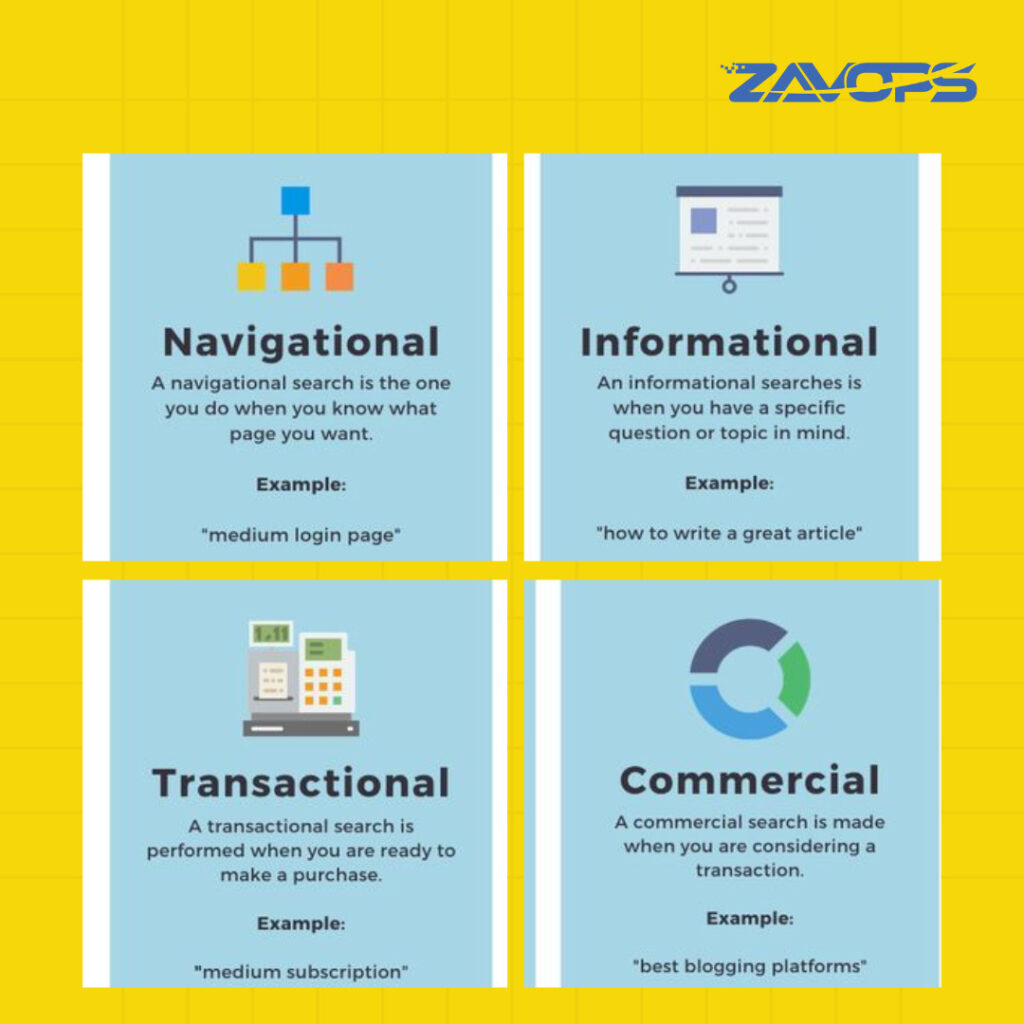
Google Adwords: Competitor Keywords
Another effective strategy within the Google AdWords landscape for SaaS lead generation involves targeting competitor keywords. By bidding on the names of competing SaaS products or services, companies can intercept users in the consideration phase who are actively comparing alternatives.
Crafting compelling ad copy that highlights differentiators and unique value propositions enables SaaS businesses to sway potential customers away from competitors.
While maintaining ethical practices, this approach allows companies to tap into an existing market where users are already demonstrating interest in similar solutions.
By strategically positioning themselves in response to competitor searches, SaaS companies can capture the attention of prospects and redirect them towards their own offerings, converting competitor-related inquiries into valuable leads.
Freshdesk and Zoho are both powerful, feature-enriched customer service software solutions.
Freshworks strategically targets competitor searches, like Zendesk and Zoho Desk, on Google search network.
By bidding on relevant keywords, Freshworks ensures its ads appear prominently, capturing the attention of potential customers actively seeking a customer service software solution.
The strategy aims to drive traffic and conversions by capitalizing on user interest in rival products, contributing to generate high quality leads for Freshworks’.
Performance Marketing Tactic 2 – Meta Ads (Formerly Facebook Ads)

Capitalising on the vast user base and sophisticated targeting capabilities of Meta Ads is a strategic move to bolster your B2B SaaS lead generation efforts.
Meta Ads provide a comprehensive platform to reach a diverse audience, allowing SaaS businesses to tailor their campaigns based on demographics, interests, and user behaviour.
With the ability to showcase visually engaging content, including videos, carousels, and interactive formats, SaaS companies can effectively communicate the value of their offerings to their target audience and ICPs.
Additionally, the integration of the pixel code allows for precise tracking and analysis, providing insights into user interactions and enabling continuous optimization for generating high quality leads.
SaaS companies can leverage Meta Ads to connect with their target audience in a personalised and visually compelling manner, fostering meaningful interactions that drive lead acquisition.
Meta Ads: Advantage+ Campaigns
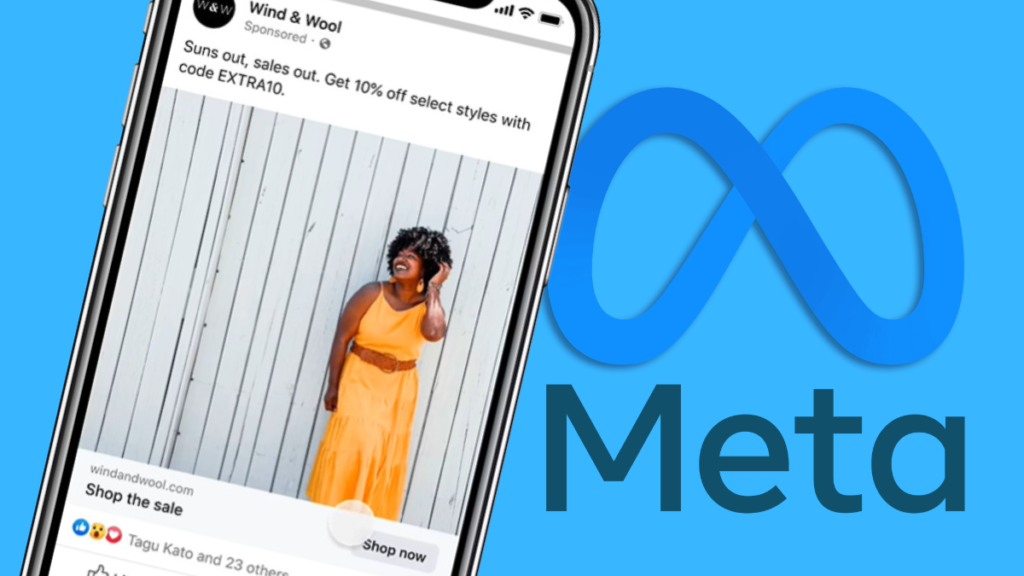
Embracing the Advantage+ campaigns within the Meta Ads ecosystem proves to be a strategic boon in SaaS lead generation campaigns.
Specifically, the Advantage+ campaigns are designed to streamline and maximise the performance of your campaign and deliver campaign objectives like generating high quality sales qualified leads or marketing qualified leads with remarkable efficiency.
This innovative product amalgamates various creative elements and audience targeting parameters into one consolidated campaign. This unified approach eliminates the need to disperse ads across distinct layers of the sales funnel, such as prospecting, retargeting, and retention.
By seamlessly integrating the entire customer journey within a singular campaign, SaaS companies can optimise their advertising efforts, ensuring high-performing creatives reach the most relevant audiences on strategically effective placements.
This not only simplifies campaign management but also enhances the precision of targeting, resulting in a more cohesive and impactful lead generation strategy on the Meta platform.
HoneyBook, a San Francisco-based business management platform, streamlined client communications and payments for small businesses.
Offering a 7-day free trial, HoneyBook faced the common issue of trial users not converting to paid subscriptions within the typical ad attribution windows. Traditional optimization strategies struggled with the diverse conversion behaviours.
By shifting focus from top-of-funnel signals to more relevant metrics using Advantage+ campaigns, HoneyBook achieved a remarkable 50% reduction in acquiring new paying customers.
This strategic move enhanced their growth initiatives, maximizing efficiency on their primary acquisition channel, Facebook.
Meta Ads: Lookalike Targeting
Lookalike Targeting within Meta Ads provides SaaS companies with a potent tool to expand their reach and connect with expanded target audience who share similar characteristics to their existing paying customers.
You may create an multiple Lookalike Audience on the basis of these sources:
- Facebook Pixel: Code installed on your website to track user actions like key page views, downloading a lead magnet, filled a form, demo requests, free trial signups etc.
- Mobile App: Create a source audience from mobile app user actions (app installation, purchases, subscription upgrade, active time etc.)
- Facebook Page: Audience of engaged users who’ve visited your page, interacted with posts, or messaged your page.
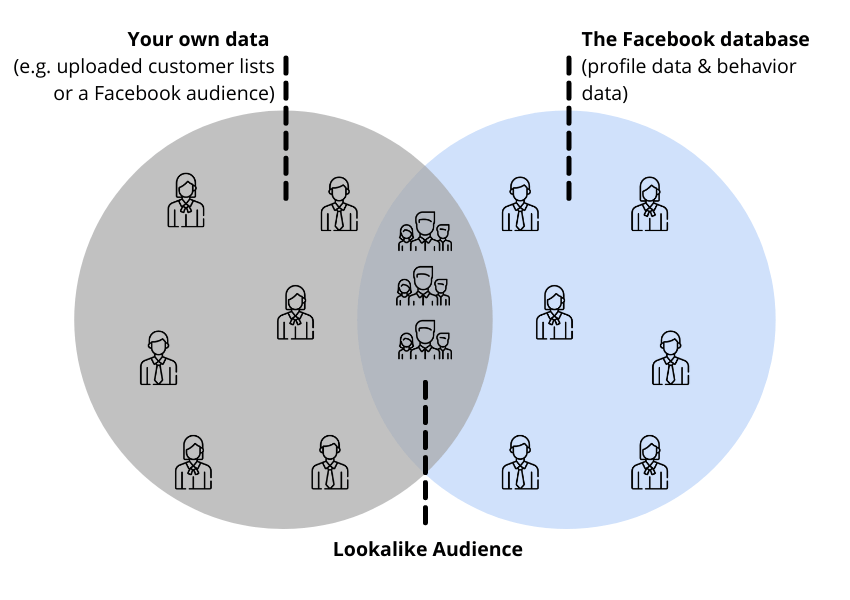
- Offline Activity: Data you have collected the old-fashioned way, like in person or by direct mail.
- Video: Audiences of your Facebook videos.
- Instagram: Users who have interacted with your Instagram account.
- Lead Form: Users who have started or completed one of your lead ads.
- Events: People who have shown interest in or attended one of your even
This enables Meta’s system to identify new target market who exhibit traits akin to your target audience in different stages of the marketing funnel, enhancing the likelihood of capturing the interest of receptive potential customers.
By using a percentage range, advertisers can fine-tune the similarity between the Lookalike Audience and the source audience, allowing for flexibility in targeting precision.
While smaller percentages closely align with the source audience, larger percentages broaden the reach to a bigger, yet still relevant, audience.
Striking the right balance depends on specific campaign goals, and the recommended source audience size of 100 to 500 people ensures a meaningful foundation for Lookalike Targeting.
Choosing a source audience composed of the best customers further refines the quality of the Lookalike Audience, optimising the potential for successful SaaS lead generation on the Meta platform.
Meta Ads: Behavioural and Demographics Targeting
In the realm of Meta Ads for SaaS lead generation, behavioural and demographics targeting emerges as a strategic powerhouse.
By utilising detailed targeting options, advertisers can precisely define their audience’s interests, job titles, behaviours, and industry alignment with the ideal customer profile (ICP).
A recommended starting point involves maintaining a wide audience range, exceeding 10,000, to ensure a substantial pool for marketing efforts.

Subsequently, Meta’s audience tools come into play, allowing advertisers to narrow down to a more specific B2B audience by leveraging a set of criteria.
Creating custom audiences enables the precise targeting of those who use the product and hold decision-making power in the buying process.
To optimise campaign effectiveness, it’s advised to experiment with various targeting options, reaching a diverse range of Facebook audiences.
Monitoring and analysing results will provide valuable insights, allowing for continuous refinement and identification of the most successful strategies tailored to the SaaS company’s objectives.
Meta Ads: Targeted Acquisition List
The targeted acquisition list feature further refines this approach, enabling advertisers to reach customers from defined targeted lists, including those from CRM (customer relationship management) suite or targeted contacts lists identified by your sales team.
You can use Meta ads to warm up audiences to augment conversions of your cold outreach campaigns. With Meta’s targeting capabilities you can deliver ads with pinpoint precision of both frequency and reach to ensure maximum value for every dollar spent.
You may leverage Meta’s targeting capabilities in conjunction with specific messaging to build personalized campaigns at scale. Leverage Meta’s capabilities to build programmatic account based marketing campaigns for your sales team.
Performance Marketing Tactic 3 – LinkedIn Advertising
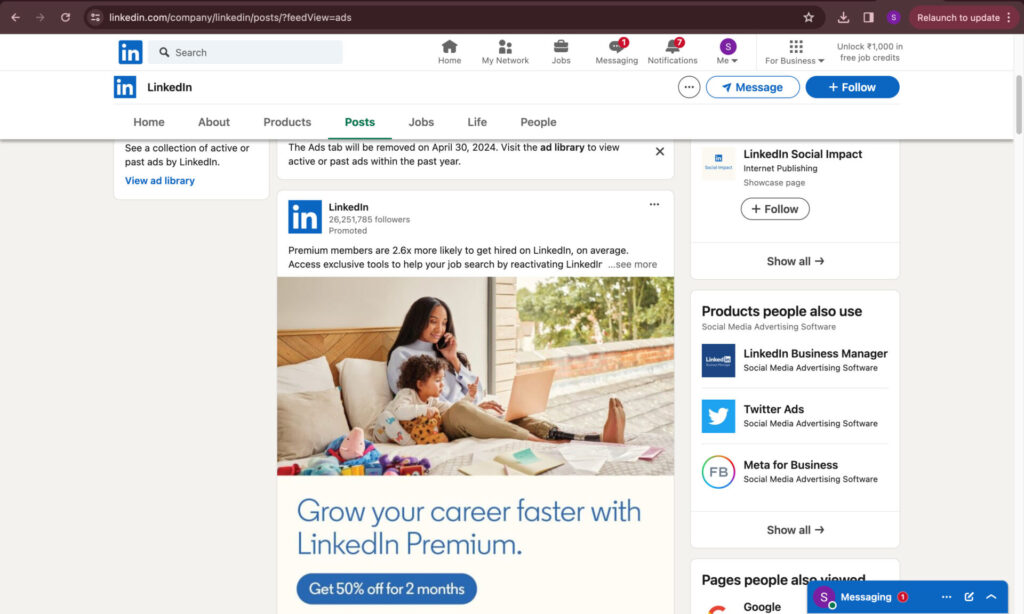
Customer acquisition is a constant and ongoing effort for all SaaS businesses. Every SaaS marketer is looking for new ways to connect with their potential customers and to increase the adoption of higher-level features amongst their existing customers.
The good news is that LinkedIn Ads is one of the most effective social media platforms around to help you do both.
LinkedIn Ads has come a long way since the platform first rolled out, and it’s the B2B ad system that SaaS marketing teams should incorporate in their SaaS marketing channel mix.
In our opinion, it can often offer more success for SaaS brands than any other social media ads platform in the market.
LinkedIn Ads: Native Ads (Sponsored Posts)
Utilising LinkedIn Sponsored Posts emerges as a native ads powered strategy for both brand awareness as well as lead generation.
Sponsored posts within the LinkedIn feed exemplify this approach of lead generation through native ads, appearing organically while clearly labelled as paid placements.
This contextual and non-disruptive format enhances user experience by blending the ad seamlessly into the user’s feed, increasing the likelihood of engagement compared to traditional banner ads.
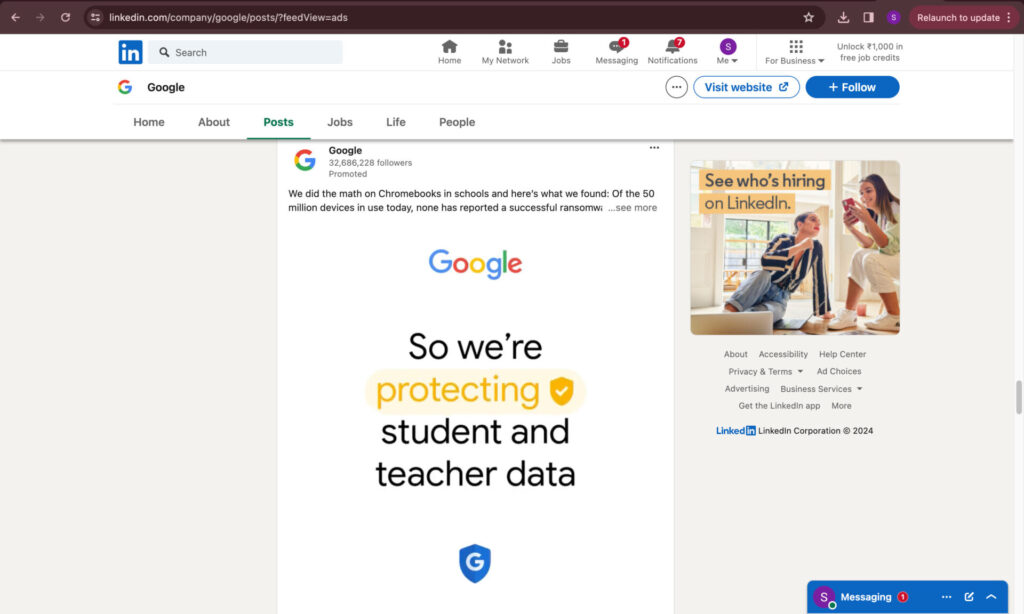
Native ads on LinkedIn, particularly B2B social media ads, offer a powerful means for SaaS marketing teams to generate leads using lead magnets, free trials, powerful content for target audience’s needs, etc.
These lead generation campaigns, akin to Meta lead generation ads, allow potential leads to autofill their information with a simple click, eliminating the need for redirection to external websites.
The result is a quick and efficient method of acquiring potentially lucrative leads, with LinkedIn’s lead-gen form boasting a conversion rate up to 33% higher than traditional landing pages—an impressive testament to the effectiveness of native advertising on the platform.
LinkedIn Ads: Account-based Advertising
LinkedIn Ads’ integration with account-based marketing (ABM) has become a potent strategy for B2B SaaS lead generation seeking swift yet impactful solutions for long-term revenue growth through high value potential customers.
This method aligns marketing and sales teams, collaborating to actively target specific high-value accounts outlined in the ideal customer profile (ICP).
Account-based marketing, in essence, transforms the desired audience into engaged customers through tailored campaigns.
For SaaS marketing, leveraging LinkedIn’s robust platform is particularly advantageous for building one to few or one to many account-based marketing campaigns.
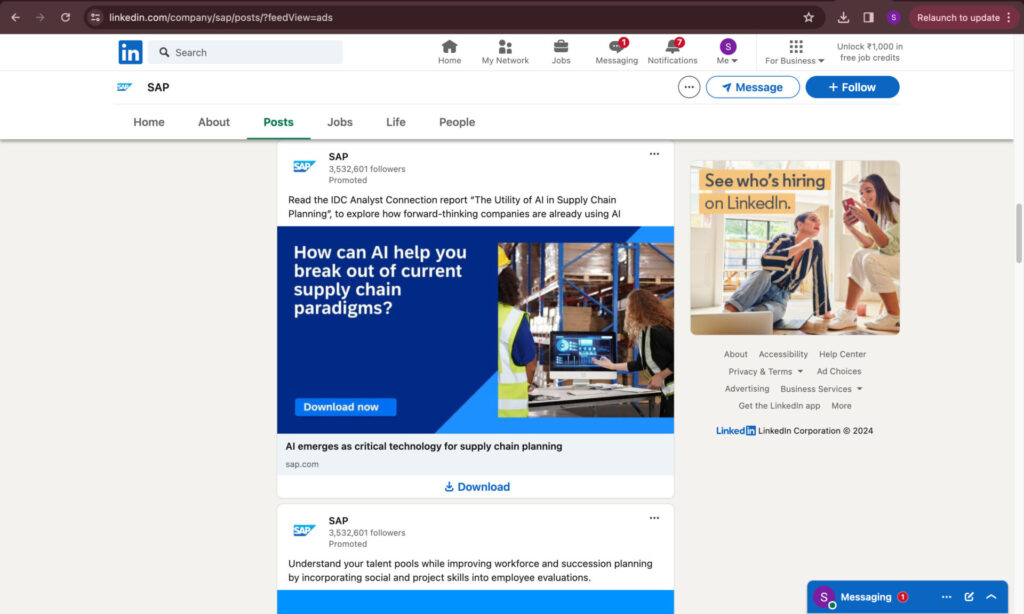
The precision of LinkedIn Ads allows for targeting users based on their affiliated companies and specific roles within those industries.
This nuanced approach ensures that communication software, for instance, can be directed towards decision-makers in large corporations, aligning with the high-value targets of the ideal customer profile.
Considering the intricacies of LinkedIn Ads for account-based marketing, collaborating with a LinkedIn Ads agency is recommended, ensuring a strategic and knowledgeable approach to maximise the impact of B2B SaaS lead generation efforts.
Performance Marketing Tactic 4 – Partnership & Alliances
Partnership & Alliances: Affiliate Marketing
Leveraging external partners to drive traffic through a pay-per-acquisition model, affiliate marketing extends the reach of a SaaS company, tapping into new audiences and fostering a symbiotic relationship where partners are incentivized to actively promote the solution for their specific audience needs.
Partnerships programs like affiliate marketing can build highly effective distribution channels for your SaaS solution.
Affiliate partners convert 3.63 percent of leads, according to Salesforce’s B2B Sales Benchmark report. By comparison, marketing-generated leads have a conversion rate of 0.78 percent.
Zenefits boosted its HR and payroll software user base through a successful Affiliate Marketing Program, increasing lead volume by 96% and achieved 3x higher ROAS as compared to their other paid channels.
Similarly, Easyship’s Affiliate Marketing Program connects SMEs with couriers and marketplaces, enabling global customer reach.
Easyship tapped into a more diverse range of partnerships that allowed them to cast a wider net. As a result, a 2020 quarter-over-quarter analysis revealed that the company had seen a 312 percent rise in revenue.
Partnership & Alliances: Referral & Reseller Partners
Referral and reseller partnerships are powerful lead generation tools used for SaaS companies to expand their reach and acquire new customers. While both involve collaborating with other businesses, they differ in how they function within your lead generation strategy.
1. Referral Partners:
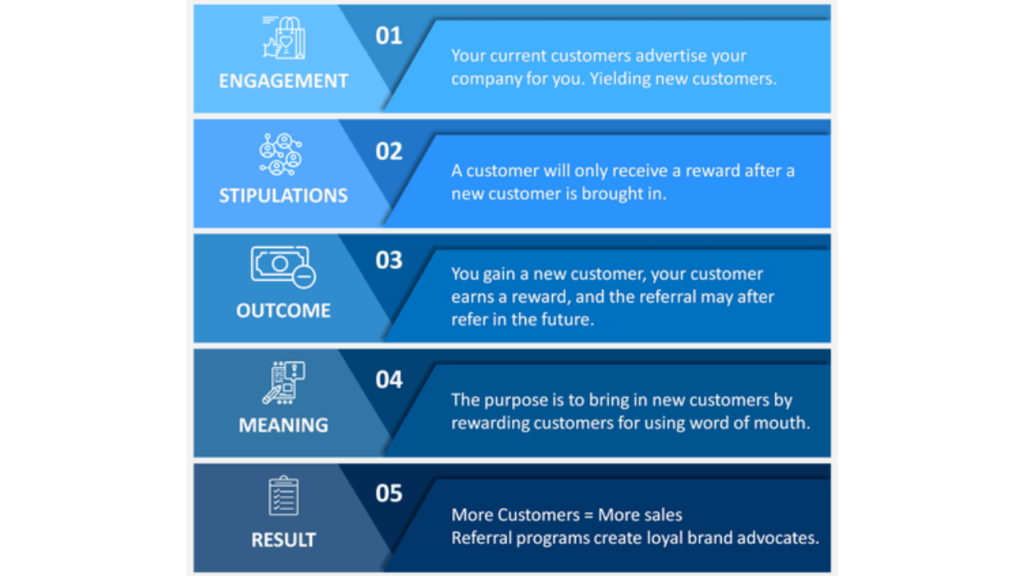
- Function: Referral partners are typically satisfied customers or businesses with complementary offerings who recommend your SaaS product to their network.
- Benefits:
- Increased Brand Awareness: Leverage the existing trust and reputation of your referral partner to reach a wider audience.
- Cost-Effective Lead Generation: Pay only for successful referrals, minimizing upfront costs.
- Targeted Audience: Partners with a similar target audience can connect you with pre-qualified leads more likely to convert.
- Examples:
- A human resources software company partners with a payroll processing company to recommend their applicant tracking system to their existing clients.
- A content marketing platform partners with freelance writer communities, offering incentives for freelance writers to recommend their platform to clients.
2. Reseller Partners:

- Function: Resellers act as an extension of your sales team, purchasing your SaaS product at a wholesale price and then reselling it to their own customers.
- Benefits:
- Faster Market Penetration: Resellers have established relationships and expertise in their niche, allowing you to tap into a new market segment quickly.
- Increased Sales Volume: Resellers have a vested interest in selling your product due to their profit margin.
- Enhanced Customer Support: Resellers may provide additional value by offering implementation assistance or ongoing customer support.
- Examples:
- A cloud storage provider partners with web hosting companies who offer their cloud storage solution as a bundled service with their web hosting plans.
- A project management software company partners with IT consulting firms who resell their project management software alongside their consulting services.
Partnership & Alliances: Product Integrations
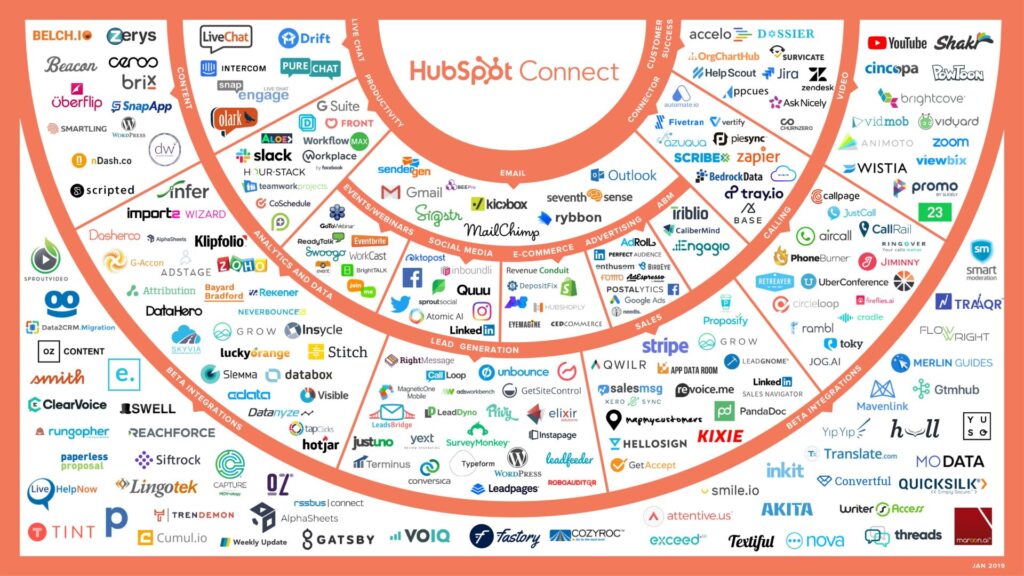
Integrating a SaaS product with complementary offerings creates a value-added proposition for users. For instance, tying in a digital banking solution with accounting software.
This not only enhances the user experience but also introduces the SaaS solution to a wider audience through strategic alliances, driving lead generation through added value and functionality.
Zoho CRM, a robust customer relationship management platform, collaborates seamlessly with Razorpay’s digital banking services.
Embedding Razorpay’s digital banking into Zoho CRM can allow businesses to facilitate smooth transactions and ensure that payment data is seamlessly tied to customer records.
This integration enhances the overall lead generation process, providing a streamlined experience for both businesses and customers.
Conclusion
In the competitive SaaS landscape, lead generation isn’t a one-size-fits-all endeavour. Tailoring your approach to your unique audience and product is key.
Embrace innovation, stay attuned to industry trends, and be agile in adapting your strategies. A dynamic lead generation approach positions your SaaS company for sustainable growth and market dominance
Struggling with your SaaS lead generation, reach out to us.

